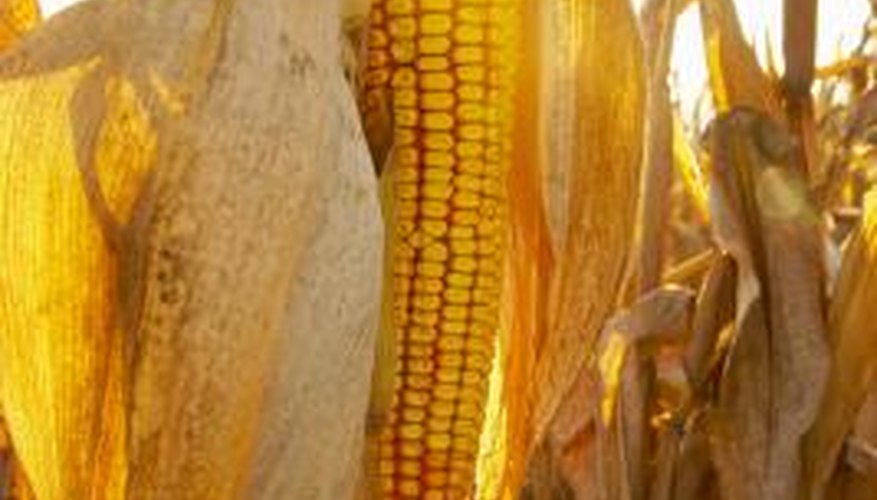Hollow stems form an important defining characteristic for plant species found around the world. Some of these plants, like the grasses, form a backdrop for landscapes, while others have found important uses as food crops and tools for human civilisations throughout history.
Prairie Grasses
By definition, grasses have hollow stems, and while the grasses you're most familiar with probably occur underfoot in your lawn, the prairie is home to your lawn grass's significantly taller cousins. Although agriculture and development have reduced the prairie to a shadow of its former self, prairie once covered one-third of the United States. Three grasses made up most of the prairie -- big bluestem, Indiangrass and prairie cordgrass -- and earned it the name "tallgrass prairie" because they could reach over 9 feet in height. In addition to these three, an additional 150 species of grass call the prairie their home.
- By definition, grasses have hollow stems, and while the grasses you're most familiar with probably occur underfoot in your lawn, the prairie is home to your lawn grass's significantly taller cousins.
Bamboo
More than 1,200 species of bamboo occur around the world, according to the Clemson Cooperative Extension. They share their hollow stems with their relatives in the grass family. Although bamboo species range widely in size, at their largest, they can reach 70 feet in height, taller than many medium-sized trees. Valued and introduced into the landscape as ornamental plantings, bamboo has become invasive in some areas, particularly the species that spread via underground roots called rhizomes. In addition to its uses in the garden, bamboo finds a variety of uses in the home, from furniture and wooden accessories to cloth.
- More than 1,200 species of bamboo occur around the world, according to the Clemson Cooperative Extension.
- Valued and introduced into the landscape as ornamental plantings, bamboo has become invasive in some areas, particularly the species that spread via underground roots called rhizomes.
Dill
Although less impressive in height than some bamboos, dill still towers over most plants in your herb garden. Tall, hollow stems support its feather foliage and broad umbels that blossom in late summer into hundreds of tiny flowers. Eventually, those flowers ripen into the seeds for which gardeners and cooks alike value dill, along with its pungent-flavoured foliage. Dill grows relatively easily in most gardens. It favours well-drained, slightly acidic soil in a full-sun location, and you should protect it from strong winds, which can bend and damage the hollow stalks. Like most herbs, it requires little special care or fertiliser.
- Although less impressive in height than some bamboos, dill still towers over most plants in your herb garden.
- It favours well-drained, slightly acidic soil in a full-sun location, and you should protect it from strong winds, which can bend and damage the hollow stalks.
Corn
That corn or maize grows with hollow stalks comes as no surprise: It is a relative of the grasses as well. Cornstalks often stretch well overhead by harvest time. You can grow and enjoy home-grown corn from your garden, and corn can thrive in nearly any conditions, although it requires a full-sun site. Unlike many other vegetable plants, you must take care when planting multiple varieties of corn, as cross-pollination between different varieties can affect the taste and performance of the crop.
- That corn or maize grows with hollow stalks comes as no surprise: It is a relative of the grasses as well.
- You can grow and enjoy home-grown corn from your garden, and corn can thrive in nearly any conditions, although it requires a full-sun site.
